You don’t need to be a train geek. Visiting the Railway Museum of Catalonia located in Vilanova i la Geltrú is an experience that leaves no one indifferent. Children love this unique museum in Catalonia, it’s an inexhaustible setting for photos and selfies and offers a full programme of cultural and leisure activities throughout the year.
For this autumn 2022 the Railway Museum has prepared a lot of new features, so you have no excuse to visit it for the first time or come back again if you did it a long time ago.
The collection of the Vilanova i la Geltrú Railway Museum brings together fifteen steam, diesel and electric locomotives and train carriages. These are four of the most impressive pieces.
La Mataró has been the jewel of the Railway Museum since its inauguration in 1990. Every first Sunday of the month, this replica of the first locomotive that circulated in the Iberian Peninsula starts up and goes on a tour of the facilities, up to the Crane Bridge track. There, the engine driver and the stoker show visitors how the steam engine works from the driver’s cab.
The history of the railway began in the Iberian Peninsula in 1848, when La Mataró completed the route between Barcelona and the capital of the Maresme region for the first time. Although the original Mataró did not survive the passage of time, we know that it was a locomotive of the 1-1-1 Patentee type manufactured in Great Britain. The 100% functional replica on display at the Railway Museum was built in 1948 by La Maquinista Terrestre y Marítima to celebrate the first centenary of the inaugural journey. It weighs over 30 tons and reaches a top speed of 50 km/h.
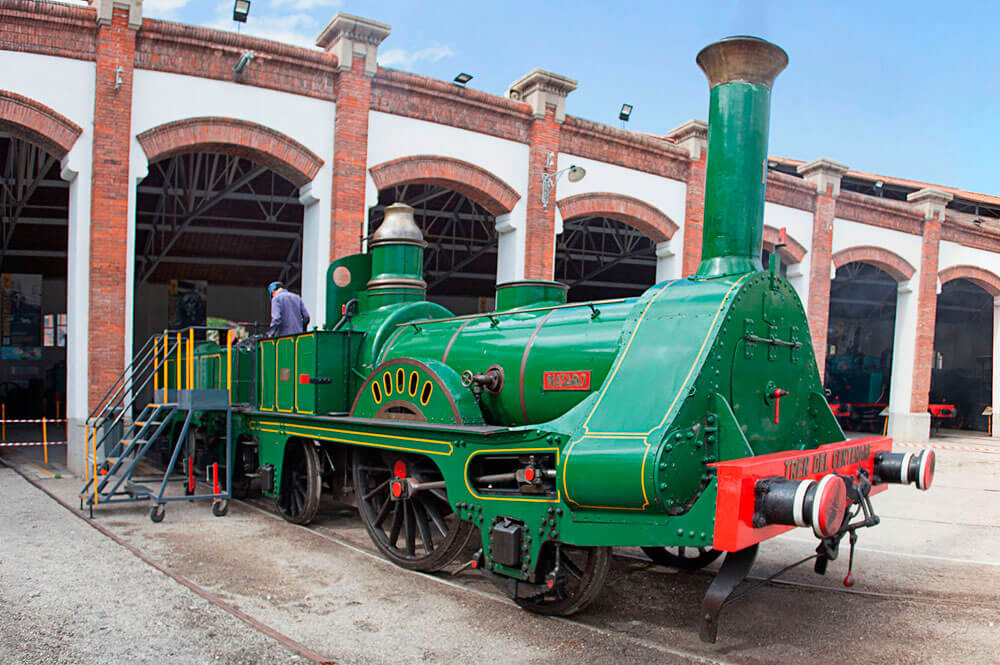
At the Vilanova i la Geltrú Railway Museum you can climb aboard locomotives and carriages and relive the history of the train in first person.
Manufactured in the workshops of La Maquinista Terrestre y Marítima in Barcelona in 1942, the Santa Fe 5001 stood out from the rest of the locomotives built in the country due to its colossal dimensions, which placed it among the largest in Europe.
Thanks to its power of almost 4,000 hp, the Santa Fe was the steam locomotive that could pull the largest load. It weighed more than 163 tonnes and reached a top speed of between 90 and 100 km/h.
Among the passenger carriages in the Railway Museum, this luxury carriage, which was built by the state in 1928 for the travel of the authorities, is particularly noteworthy. Its completely restored interior has a series of departments for visits and long journeys: meeting room-dining room, bedrooms, bathrooms and kitchen, which make it into an office on wheels. All of this is beautifully crafted with marquetry work.
The ZZ-324 saloon car weighs more than 36 tonnes and is capable of speeds of up to 100 km/h.
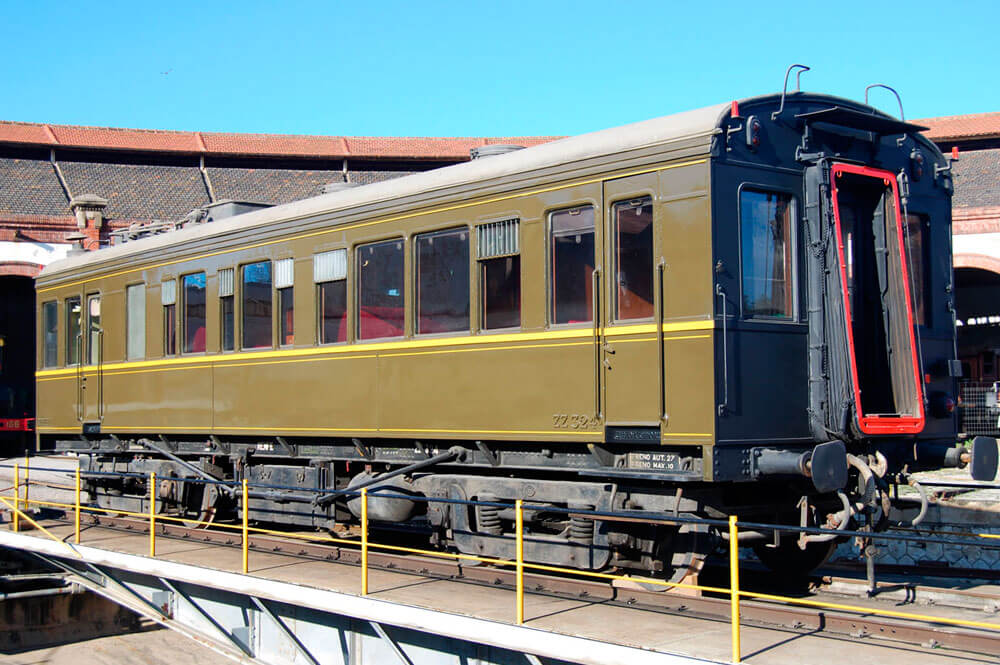
The Talgo II, heir to the Talgo I prototype, was a real revolution in 1949. So much so that many of its innovations are still preserved in the current compositions of Talgo material: united and articulated vehicles, light, with a low centre of gravity and independent running gear, and a high level of comfort with reclining armchairs, in-seat catering, access doors at platform level, panoramic windows, air conditioning and a lookout type caboose.
Talgo II locomotives ran until 1976, weighing 60,000 kg, developing a power output of 810 hp and reaching a maximum speed of 145 km/h.
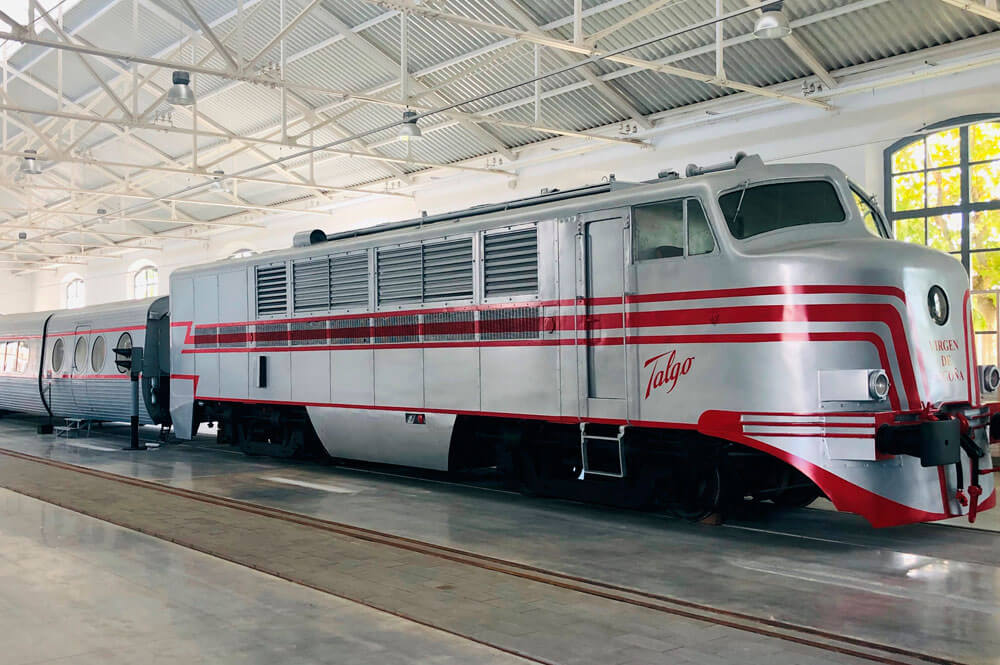
The impressive collection of locomotives and passenger carriages of the Vilanova i la Geltrú Railway Museum is displayed in a spectacular setting. The most outstanding pieces are exhibited in the Rotonda, a modernist industrial building dating from 1919. Its quarter-circular crown shape with twelve tracks and pits was originally used for the maintenance and repair of steam locomotives.
The functions carried out by the railwaymen inside were those of greasing and preparing the locomotives for service, the supply of materials such as coal, grease, sand or water, the cleaning and conservation operations of the different elements, the repair of breakdowns and also the organisation of the driving staff to ensure the different services.
Up to 900 employees worked at the Vilanova i la Geltrú steam depot, in an atmosphere full of smoke, soot and grease that you can relive today during your visit.
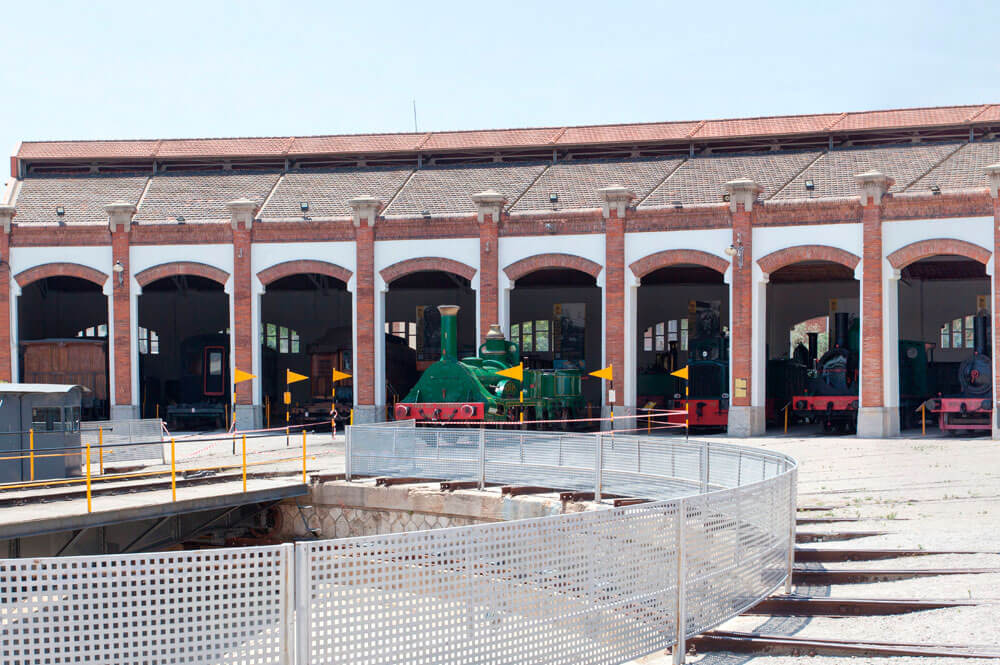
This autumn the museum is unveiling a new passenger carriage that travels around the museum.
One of the latest novelties at the Railway Museum in 2022 is the new passenger carriage that travels around the historic facilities in Vilanova i la Geltrú. It is a handcrafted wooden structure that has been built by the Association of Members and Collaborators of the Museum from historical and newly created elements and pieces.
The new carriage is designed to be assembled on the steam locomotive “Cuco” 020-0232 (MZA 602) or on the shunting tractor 301-012-1, two machines in operation whose dimensions do not allow visitors to go inside the cab. Inside, there are two benches located on both sides of the central aisle where up to 10 people can travel. A new first-person experience at the Vilanova i la Geltrú Railway Museum.
It is something almost universal in all children: they love trains. At the Railway Museum they know this and have prepared a lot of activities especially designed for the little ones. Every weekend there are storytellers, and there are also workshops on Intelino, the intelligent toy trains equipped with programmable robotic technology. Check the monthly agenda on the website.
The museum also has several family areas: L’Estació Petita de Vilanova, Parc Vall de Núria and the Picnic Area.
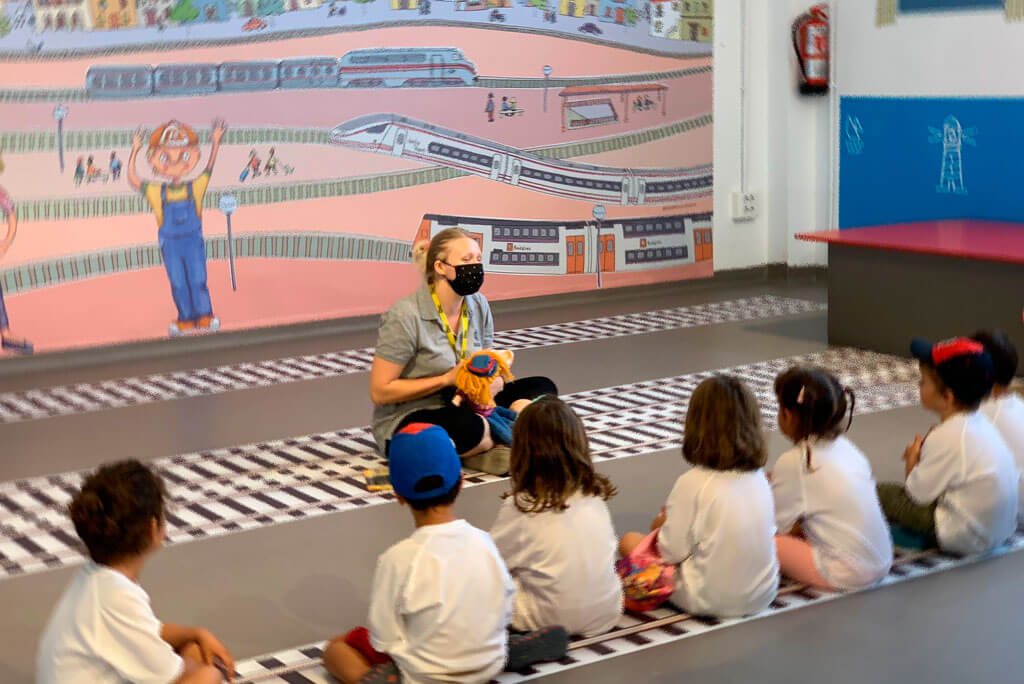
For history lovers there is a programme of guided tours, TRENexperiències, which this autumn covers topics such as the steam locomotives La Mataró and La Santa Fe, the role of the Indianos in the history of the railway, the revolution brought about by the Talgo in the mid-20th century, luxury train journeys, etc.
This autumn, from 24 October to 7 November, the Railway Museum of Catalonia is hosting the temporary exhibition “Catalonia, a country of ingenuity and innovation”. This production by the National Museum of Science and Technology of Catalonia (mNACTEC)
takes a look at the history of the country through the contributions made by Catalan scientists over the centuries, from the Middle Ages to the present day.
Very interesting objects will be on display in the exhibition:
In addition, the exhibition will be located in the newly built panoramic hall, which offers excellent views of the museum’s locomotive collection.
If you prefer, you can also book a guided tour led by specialists in specific subject areas. The museum offers three possibilities:
The Museu del Ferrocarril de Catalunya is open from Tuesday to Sunday from 10:00 to 14:30. It is also open on Saturday afternoons, from 16:00 to 19:30 or until 18:30 between November and February. It is closed on Mondays.
Thank you for reading, sharing on your social networks and commenting!
Discover Vilanova i la Geltrú through our website, where you will find family accommodation, exciting activities, exquisite gastronomy, enriching culture and a wide range of shopping options. Plan your perfect vacation with us and take advantage of the unique shopping experience the city has to offer!